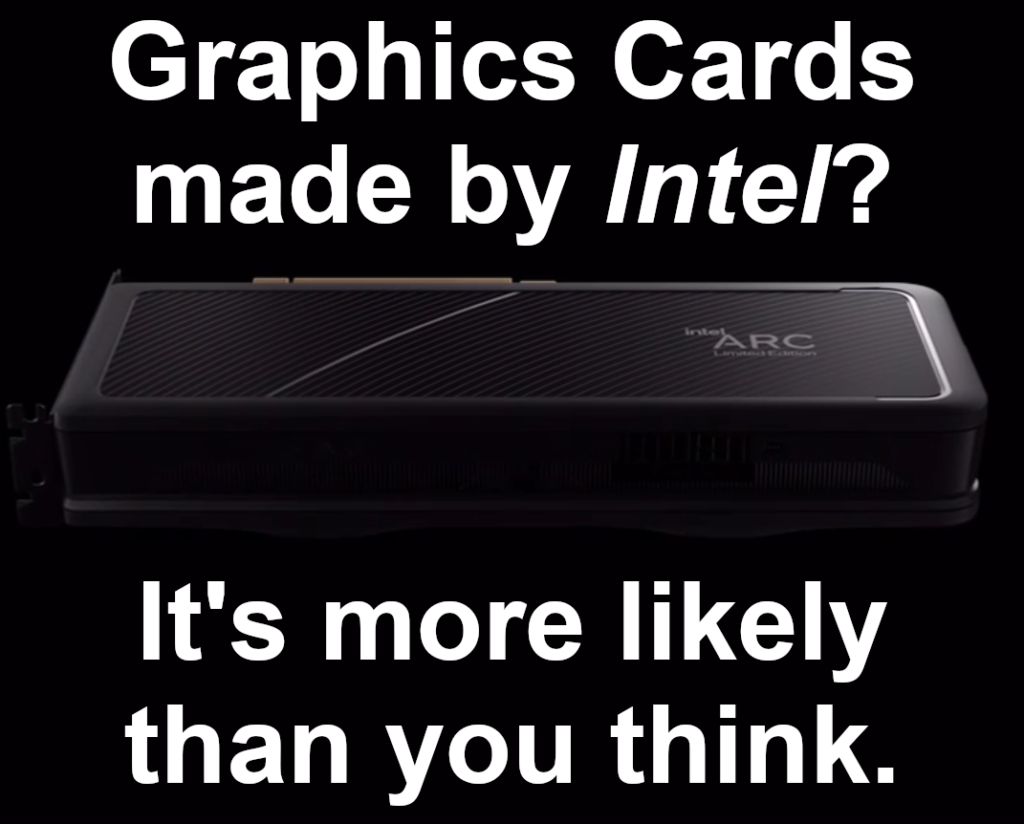
nVidia has recently released three refreshed cards, the RTX 4070 Super, RTX 4070 Ti Super, and the RTX 4080 Super.
That is a lot of Supers! Let us take a look at each, in brief.

nVidia has recently released three refreshed cards, the RTX 4070 Super, RTX 4070 Ti Super, and the RTX 4080 Super.
That is a lot of Supers! Let us take a look at each, in brief.

One year ago (almost to the day) Intel presented its A770 and A750 cards to the world. These were reasonably priced cards with reasonable performance, but were not added to our build chart then because—in addition to other minor issues with them—they suffered from two major flaws:
It has been a year, and you still need a system that has Resizable BAR, but that is available on all modern platforms launched in the last ~3 years, so it is less of an issue. More importantly, Intel’s latest drivers have dramatically improved performance in older games, between 20%-40%! That is a huge improvement.
Today, Intel launched the A580, prompting a second look into Intel’s previous cards. Since all three are based on the same silicon, we will look at them together.

AMD has released two new graphics cards, the RX 7800 XT ($500) and the RX 7700 XT ($450). One is decently good, and the other is… standard for AMD launches.

There have not been that many major releases recently, so this will be a small update that mostly includes items we are not adding to our chart.
And before we get to those items: All three non-added items are due to bad pricing. They are great items if they were cheaper, but we at Logical Increments would probably not recommend $100 cups of coffee either.

The majority of PC part launches from established companies are successes, as professionals usually try to design good products for the purpose of attracting customers.
From time to time, however, the human beings at such companies make mistakes, or go overboard on the alcohol, or let the engineers dream a little too much. The past week gave us a rare and beautiful opportunity to see not one but two hugely entertaining slipping-on-banana-peel-tier product launch failures, with a pratfall each from nVidia and AMD.

Rumours of an Intel entry into the graphics card market have been circulating for years, and many people had eagerly anticipated the arrival of a third player to the discrete GPU space.
Well, it happened. A few days ago, Intel released the Arc A750 and Arc A770 cards. Let us take a look at the good and the bad of this launch.

(Sailboat photo by Robbie Sproule)
Can you feel it? The change for PC builders, not very subtle, happening even as I type these words?
The clouds have lifted. The sun is shining. The news is good. It is as follows:

At last! All modern GPUs are available for purchase, new, for MSRP. No more crying as you pay 2x or 3x the recommended price for a card. No more heartbreak as you buy a used card that has been sitting in a crypto farm for 2 years. No more sad checking on crypto prices, hoping and praying for a crash. No, friends, that time is over!
Oh, how sweet it is, to have everything in-stock and for a normal price. With that, a large number of changes have hit the charts, so let us take a look.

You want to get the best GPU for your money. That’s natural, because your graphics card is probably expensive, and you want your money to be well-spent. But how do you know what to look for? What GPU specs should you look at? What do the numbers mean?
In this article, I will explain what certain key GPU specifications mean, and roughly how they translate into actual in-game or program performance.

GPU prices started going up (roughly) in March of 2020 when all hardware went up in price or went out-of-stock. It happened slowly at first, then faster and faster, until widespread unavailability became the norm!
During the worst of the worst, it was so bad that you could not buy most graphics cards, no matter what price you were willing to pay! I am very glad that the worst is over.
But we aren’t out of the woods just yet.